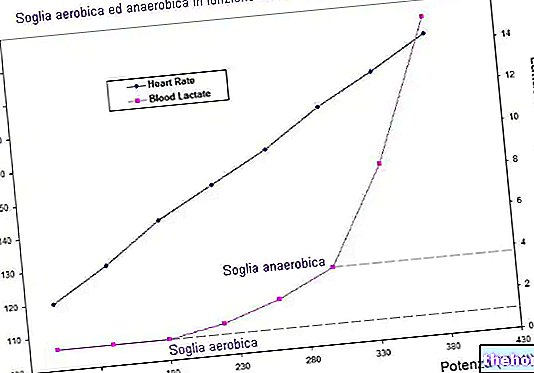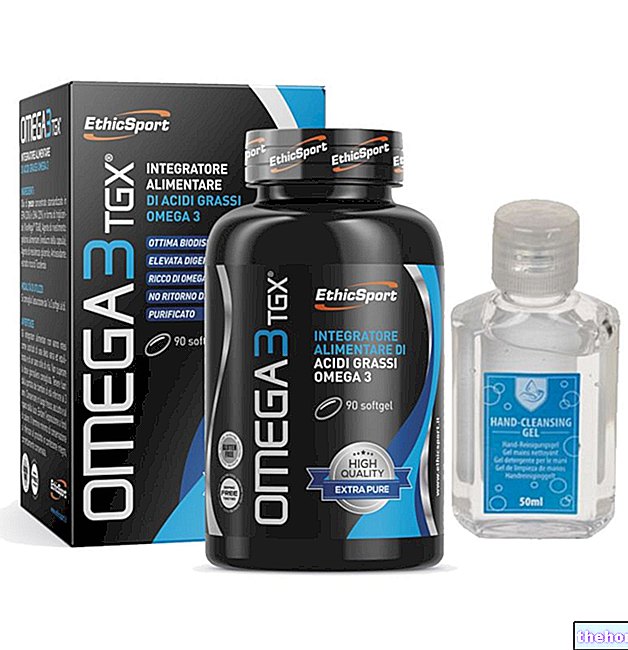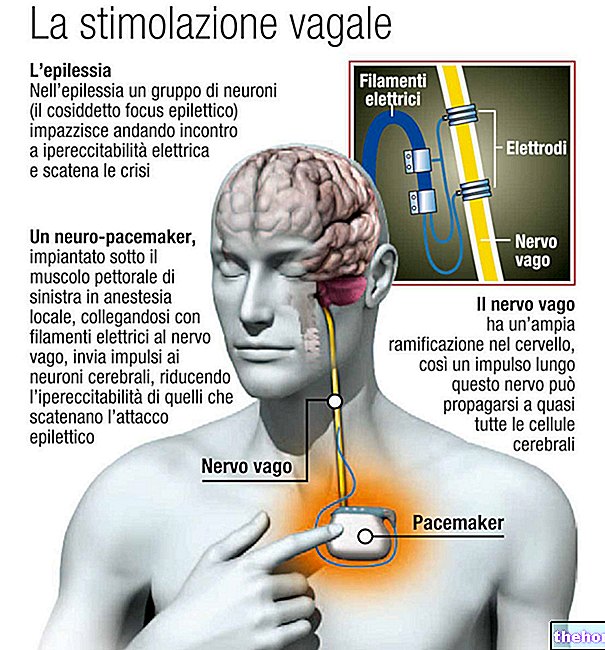Aerobic threshold
In cross-country and middle-distance sports, the calculation of the exercise intensity is fundamental to the success of the training; it is a question of identifying and accurately measuring some "quantities" or "parameters" that reflect the effectiveness and efficiency of our energy metabolisms. The most useful are:
- Maximum heart rate (HRmax): maximum number of heart beats per minute; it is obtained by carrying out maximal stress tests or with the formula 220-age of the subject.
- Aerobic power (BP): it is calculated indirectly by measuring the amount of oxygen consumed in each minute (mlO2 / min) of MAXIMUM effort (VO2max) through exercise spirometry or through incremental tests; it is a value that indicates the overall capacity of the organism to exploit the aerobic metabolism (even after the activation of the lactacid metabolism) and is placed close to the HRmax. It seems that aerobic power is genetically determined, but it can be improved by about 10-25%.
- Aerobic threshold (SAE): it is a parameter that indicates the MINIMUM threshold of an intensity interval characterized by the NON-LIMITING intervention of the anaerobic LACTACID metabolism; during the exercise carried out in the aerobic threshold, concentrations of lactic acid equal to approximately 2mmol / l. It is calculated with precision above all (BUT NOT ONLY) by means of the chemical analysis of the blood.
- Anaerobic threshold (SA): it is a parameter that represents the MINIMUM threshold of intensity capable of causing lactate accumulation; the anaerobic threshold (which also graphically represents the deflection point [VD] - see Conconi test), can be detected with incremental tests, with chemical analysis of blood (lactic acid> 3.9mmol / l) and with exercise spirometry.
Both the aerobic threshold and the anaerobic threshold can be improved by stimulating two essential skills:
- Effectiveness and efficiency of aerobic metabolism (training in the ANAerobic threshold)
- Ability to dispose of lactic acid (training at intervals or repeated above and below the anaerobic threshold)
Calculation of the aerobic threshold
The aerobic threshold represents a particularly useful value in the race strategy of the marathon runner, cyclist and tri-athlete; it is possible to say that the aerobic threshold speed corresponds to the ideal speed to face and complete at best a performance lasting about 2 hours (for example, marathon duration of 42.195 km), as it represents the minimum intensity of the metabolism anaerobic with CONSTANT maintenance of minimum lactate values.
To calculate the aerobic threshold it is possible to intervene with various more or less precise and reliable methods:
- Percentage calculation relative to the THEORETICAL maximum heart rate: once the HRmax value (220-age) has been obtained, it is possible to obtain the aerobic threshold value by conventionally calculating 60% of the total [imprecise method].
- Carrying out an incremental test: the Conconi Test and the Cooper Test are two protocols of fundamental importance for determining the VD or SA in sportsmen and athletes; in practice, it is possible to identify the aerobic threshold by conventionally calculating the 75-85 of the SA. Furthermore, performing a periodic test (1 or 2 times a year) means obtaining a complete overview of the cardiac trend during the incremental and maximal effort (cardio-circulatory, respiratory and muscular fitness indicator), a fundamental detail or at least very useful in the accurate determination of an occult value such as that of the aerobic threshold [precise method].
- Spirometry gas monitoring: this practice is considered almost obsolete due to the cost of materials; gas monitoring was born as a method of calculating VO2max under maximal effort. In sports practice, the measurement and comparison of inspired O2 and expired CO2 are useful in determining the effective use of the aerobic mechanisms. By obtaining the VO2max it is possible to identify the aerobic threshold by carrying out a percentage calculation on the aerobic power: aerobic threshold = 70-80 % VO2max (elite athletes), 50-60% VO2max (amateurs, beginners) [precise method].
- Monitoring of blood lactic acid: through the detection of blood lactic acid during exercise, it is possible to establish at each intensity STEP which is the commitment of the lactacid metabolism and the ability to dispose of the catabolite. Obtaining values of 1.8-3, 2mmol / l which remain unchanged at constant speed, it is possible to determine not only the MINIMUM point of aerobic threshold but the entire band that precedes the VD or ANAerobic threshold [very precise method].

The aerobic threshold occurs with a slight increase in blood lactate levels, while the anaerobic threshold occurs with a noticeable surge in blood lactate levels
The evaluation of the aerobic threshold is fundamental for the estimation of the race speed in the marathon and in all the activities that base the race performance on aerobic endurance (very long duration of exercise).
- In other words, the aerobic threshold can be defined as the minimum training stimulus, that is to say the minimum intensity at which a subject should exercise if he wants to obtain a minimum improving training effect on performance. Training below this threshold can therefore be considered a waste of time.




























